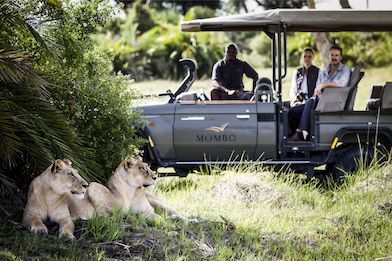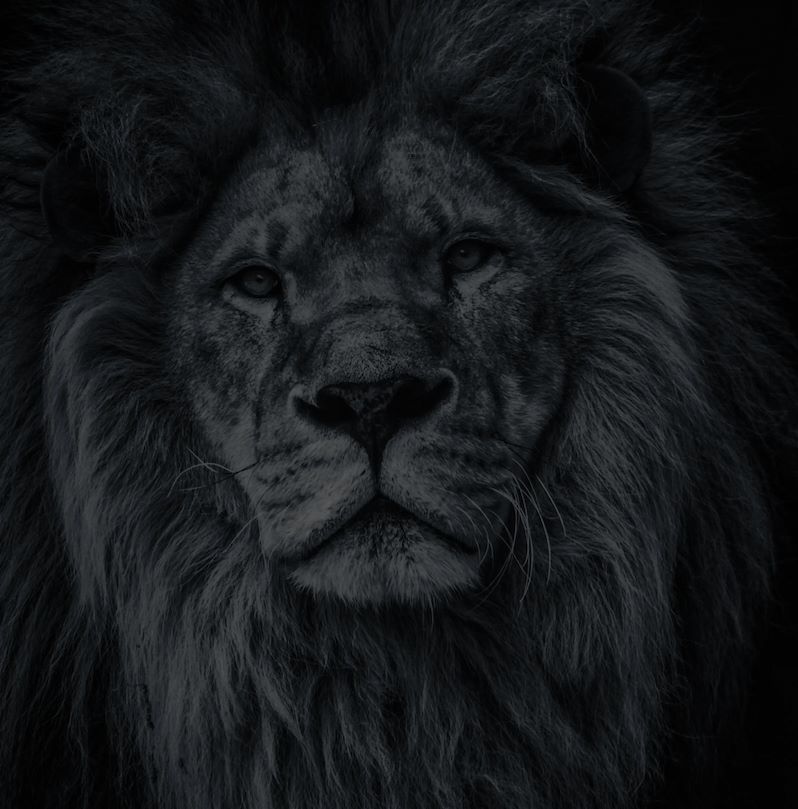While all the new additions and furnishings at Little Kulala are beautiful to see, perhaps the most exciting additions are the amazing experiences you can enjoy during your stay at Sossusvlei. For the more active guests we have amazing e-bike trails to explore, and for those who simply want to enjoy some pampering, the spa is for you.

But for those guests who are looking for excitement, as well as the opportunity to learn something new, the Living Desert Experience has it all, exploring what appears to be an almost desolate area, yet is anything but! Every inch of the Kulala Wilderness Reserve and the Namib Desert is teeming with life just waiting to be discovered, and our talented guides cannot wait to share their knowledge with you.
Wilderness MD Alexandra Margull explains: “Since forming around five million years ago, the Namib’s fauna and flora has evolved to survive in striking ways, developing fascinating traits along the way. It was therefore important for us to plan activities that would reveal this to our guests: from desert-adapted species to the smaller creatures that are not as easy to spot”.

The most captivating feature of the Namib Desert is its mysteriousness; from a distance it appears static, but those curious enough to take a closer look will know just how much there is to uncover.
One such curious soul is talented guide and photographer – Chantelle Bosch – who offers a preview into the power of small things, and the brilliant nuggets of information you can glean during this fascinating activity.
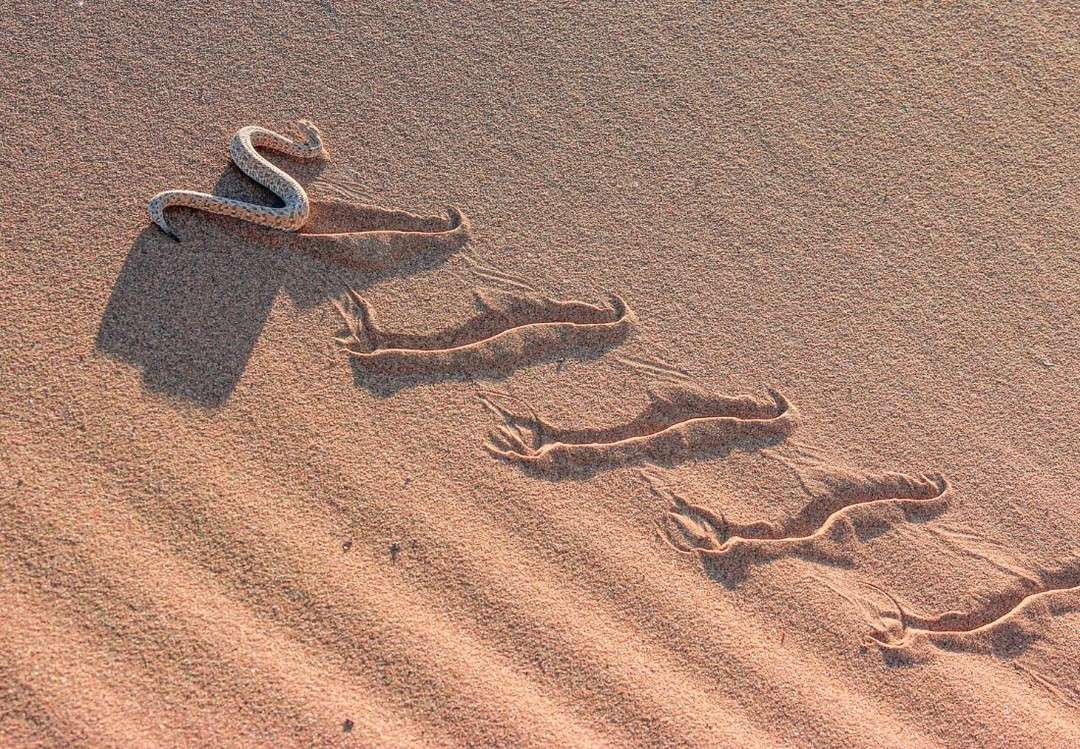
The sidewinder snake (Bitis peringueyi) pictured here displays the behaviour that gives it its name. These snakes can climb the side of soft dunes by slithering “sideways”, advancing in what appear to be steps. They are also able to move over very hot sand as less than half of their body is touching the sand at any one time. When they are cold, they move straight, like a puff adder.

The Namib dune cricket (Comicus sp.) has very unique feet, allowing it to dig into soft sand very quickly, and providing good traction when moving over soft sand. Their antennae reach up to three to four times the length of their bodies.

One of the many commonly called dancing white lady spiders, which belong to the huntsman family Sparrasidae. They communicate through the quartz dune sand by drumming their feet on the sand, and sensing vibrations.
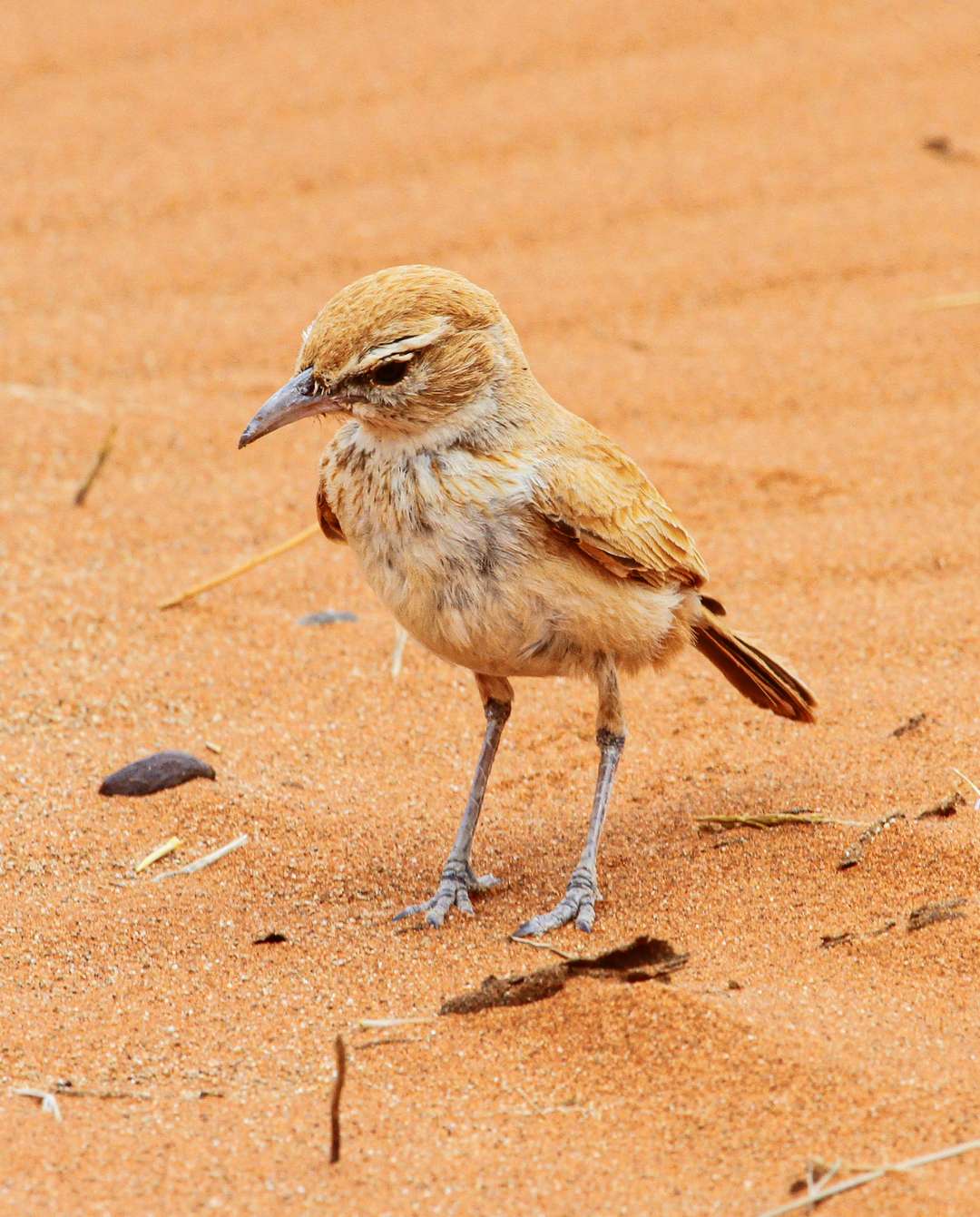
The dune lark is our only true endemic bird, and watching them looking for beetle larvae, termites, spiders and other insects is very entertaining

Barking geckos call at night, and are more often heard than seen. They usually retreat into their burrows when they sense movement in their vicinity.

Namib dune ants are very social, and collect honeydew from the various scale insects that live in the grass. They spray formic acid from their abdomens when threatened.

The shovel-snouted lizard (Meroles anchiete) will dive into soft sand when threatened. If they cannot dive, they will run away remarkably quickly. These unusual lizards cool their feet on hot sand by preforming a thermal “dance” – lifting alternate feet (front left and back right / back left and front right) cooling two feet for a few seconds at a time before switching.
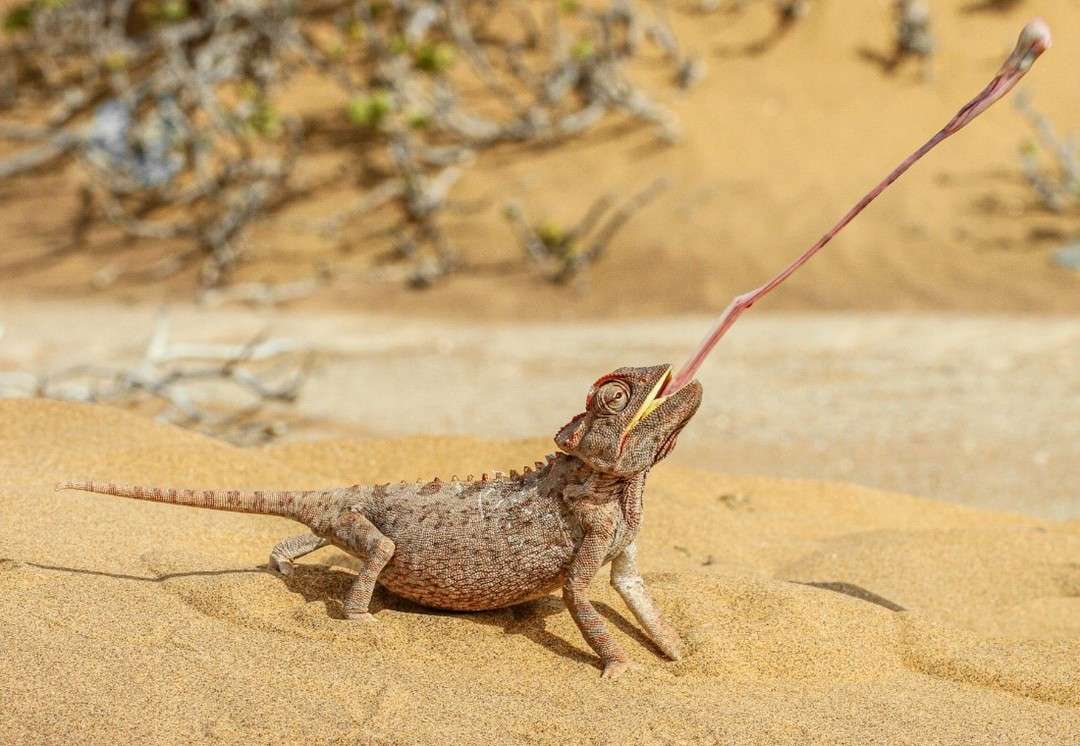
The Namaqua chameleon (Chameleo namaquensis) is the fastest chameleon in the world, and one of only two species worldwide that lives on the ground. Its tongue is as long as its entire body, including the tail! This muscle is so impressive, it can stretch even longer still.

One of the many commonly called “tok-tokkies” (Tenebrionidae) is the Onymachris plana – this one is also the fastest beetle in the world. They simply walk into the soft sand if it gets too hot, or if they need shelter.

The ridged seed beetle (Stips stali) is very flat and aerodynamically shaped, which allows it to walk around in very strong wind without being blown away
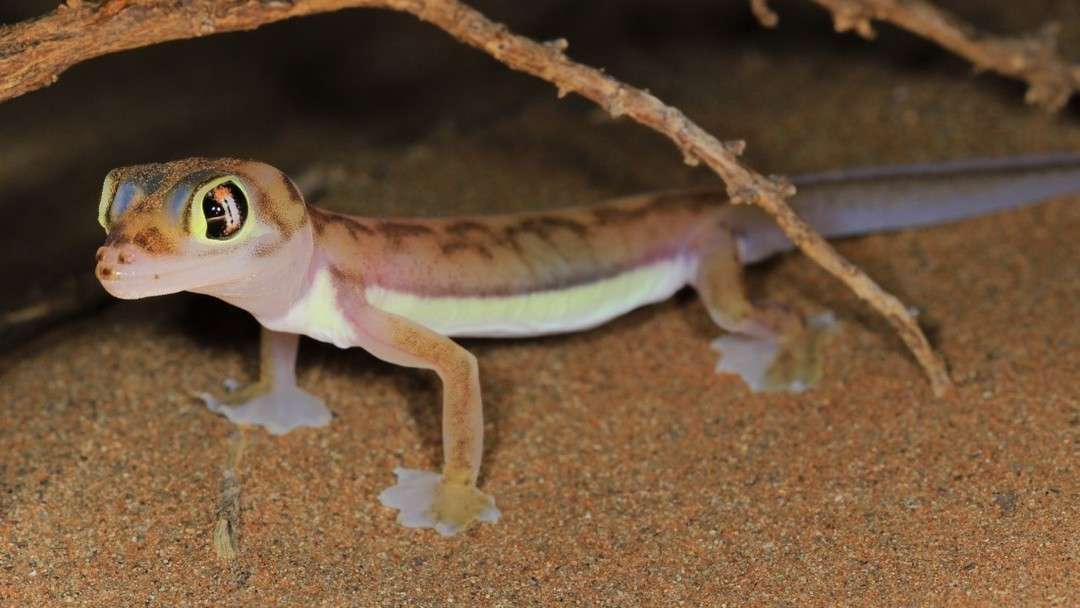
The Namib web-footed gecko (Pachydactylus rangei) is strictly nocturnal. With its very thin skin it is highly susceptible to UV rays. Its webbed feet give it a huge advantage when digging into the sand, as well as great traction when running over the sand hunting for silverfish, crickets, beetle larvae, spiders and other softer insects which make up its diet.





